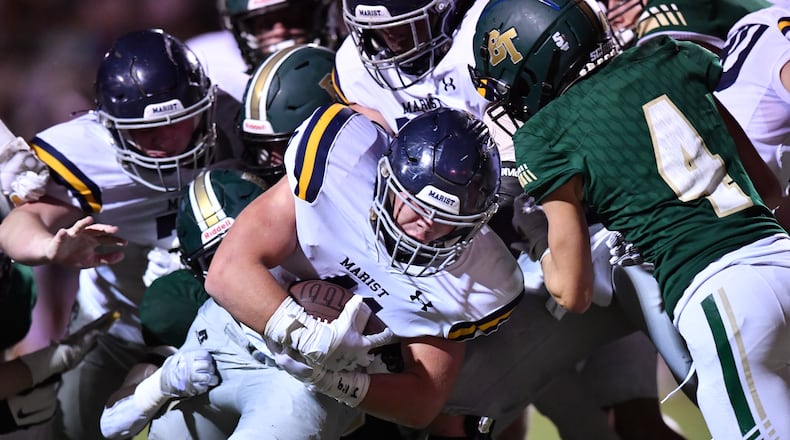The Georgia High School Association’s reclassification committee on Monday favored increasing the out-of-zone enrollment multiplier to 2.5 or 3.0 to address the disproportionate sports success of private and city schools.
Three straw-poll votes, each resulting in a 13-5 tally, supported increasing the multiplier from the current 2.0 while rejecting the private schools’ competitive-balance proposal and the city schools’ call for a different kind of multiplier.
The informal votes are not official or binding, and the reclass committee will meet again Sunday hoping to settle on a framework to present before the GHSA’s executive committee by Monday.
Reclass committee member Tommy Marshall, the former athletic director of Marist, a private Catholic school, pushed for the committee to reconsider a model proposed by nine larger private schools to allow their sports teams to be classified individually based on their past results. It did not get support Monday.
A proposal from city schools Calhoun, Cartersville and Jefferson to apply the multiplier only to out-of-zone athletes, and not all students, was similarly brushed aside.
Those proposals aren’t necessarily off the table, but they’ll require successful lobbying to gain quick traction. If the GHSA approves a reclassification plan Monday, the GHSA next week will begin placing its 450-plus member schools in new classifications and regions, a process that can take two months or longer.
The GHSA used a 2.0 multiplier for the current two-year cycle, which will end after the 2021-22 academic year, but most public schools now say it didn’t go far enough in curtailing what they believe are unfair competitive advantages held by schools that get large percentages of their students from out of their school zone.
The multiplier counts out-of-zone students more than once when determining a school’s enrollment used for classification. For example, a school with 1,000 students overall, and 500 from outside the school’s zone, would be counted as having 1,750 students using a 2.5 multiplier and 2,000 students using a 3.0 multiplier.
A group of nine larger private schools — Benedictine, Blessed Trinity, Greater Atlanta Christian, Marist, Pace Academy, Lovett, St. Pius, Westminster and Woodward Academy — are the most likely to face higher classifications under a bigger multiplier. City schools such as Buford, Cartersville, Calhoun and Jefferson also could wind up in higher classes.
About the Author
The Latest
Featured


